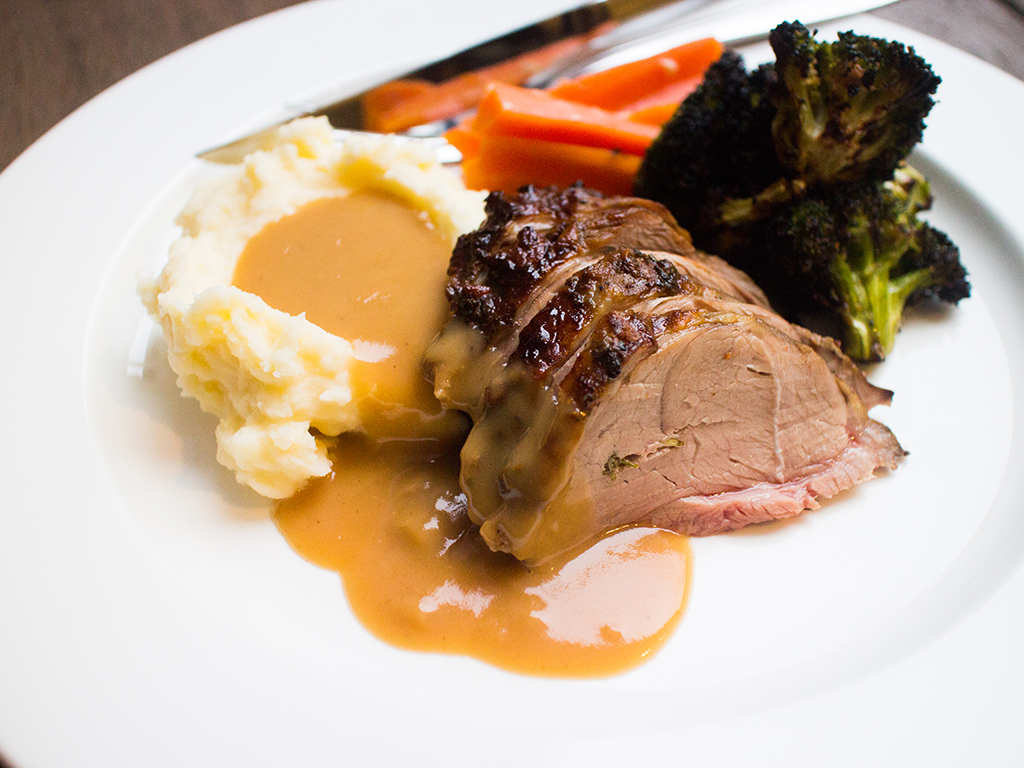
Roast lamb is truly a classic dish to serve during Christmas and other special occasions, especially when you’re looking for an impressive meal to put together without too much fuss.
Christmas in Malaysia is a pretty multicultural affair, celebrated especially among the Serani’s (Eurasians), Chinese, Indians and East Malaysians. Unlike Aidilfitri – which typically has a stock standard, and let’s face it, expected menu – the Christmas spread, however, varies from household to household. But don’t be surprised to find, placed centre stage amidst the curries and stir-fries, one or two pièce de résistance – the turkey and roast lamb.
This is a decades old tradition, possibly as old – or older – than the days of colonial Malaya. Roast lamb has certainly been around long enough to qualify itself as a Malaysian recipe, and it’s certainly not constrained to just the Christmas season either. Many Malaysians also serve it for New Year’s Eve, birthdays, graduations or special family gatherings.
But how do you get that perfectly juicy and succulent piece of lamb? Here’s a secret. There are multitudes of roast leg of lamb recipes out there, and ours is pretty good and requires little effort to put together. However, what you really need for a good roast lamb is time, and the magic weapon – a cooking thermometer.
Let’s get roasting.
Ingredients
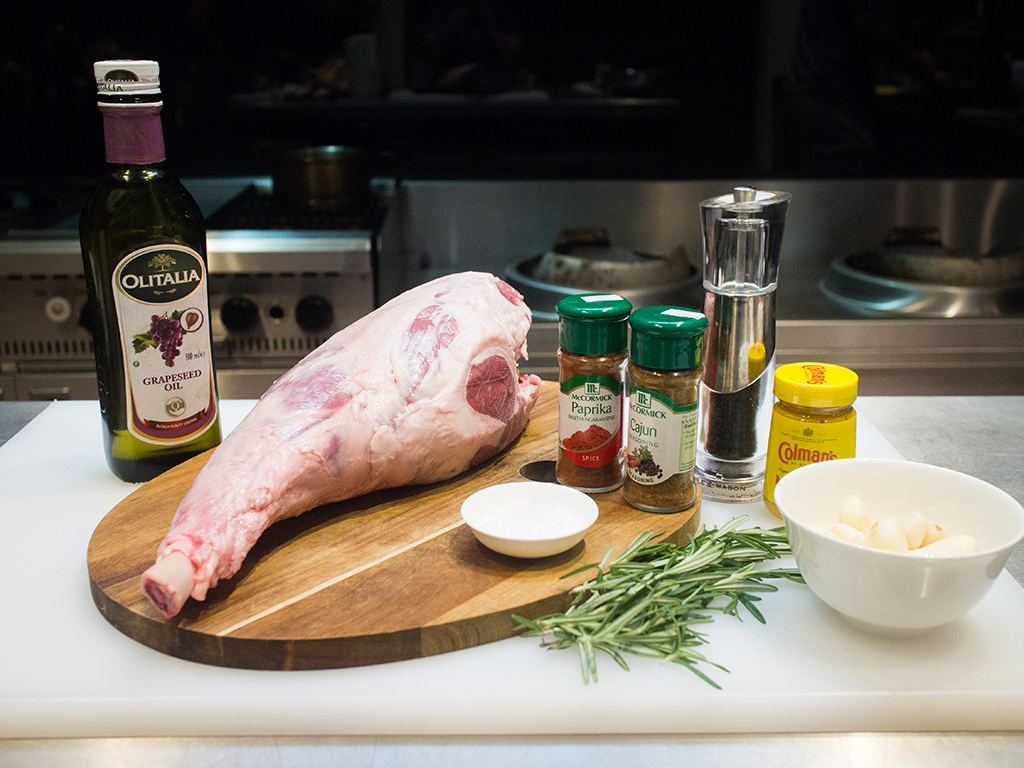
- 2.3kg leg of lamb
- 6 garlic cloves
- 3 rosemary sprigs
Marinade
- 40g grapeseed oil
- 37g garlic (about 3 cloves), peeled
- 4g rosemary (about 4 springs)
- 2 tbsp (16g) hot English mustard
- 1 ½ tsp (4g) Cajun powder
- ½ tsp paprika powder
- 1 tsp (4g) salt
- ½ tsp pepper
For sprinkling
- 1 tsp (4g) salt
Special equipment
- Cooking thermometer
Method
Lamb preparation
- Defrost leg of lamb in the chiller for 2 days before cooking and serving.
- Pre-heat oven to 150°C.
- Before marinating your leg of lamb, wipe and dab it down with paper towels to remove moisture. You can prepare your marinade first before removing your lamb from the packaging and wiping it down.
- For extra points, scour about 2.5cm from the edge of the lamb where the meat meets the bone. You’ll want to cut right through until the meat is thoroughly severed. Remove the meat. This gives you a nice, neat edge, especially if you’re preparing to serve your leg of lamb whole.
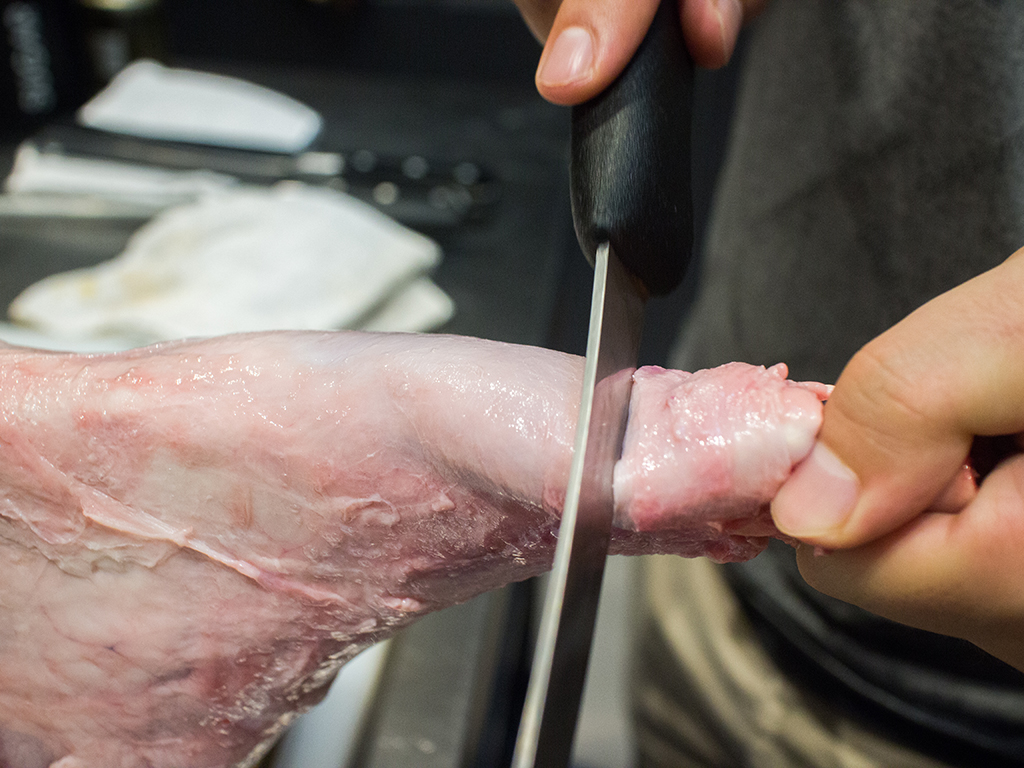
- On the meatiest side of the lamb, use a narrow knife to poke your lamb meat in six random places that are more or less evenly apart. Poke the knife in deeply, until it almost reaches the bone.

- Shove in 1 garlic clove into each of the cuts.
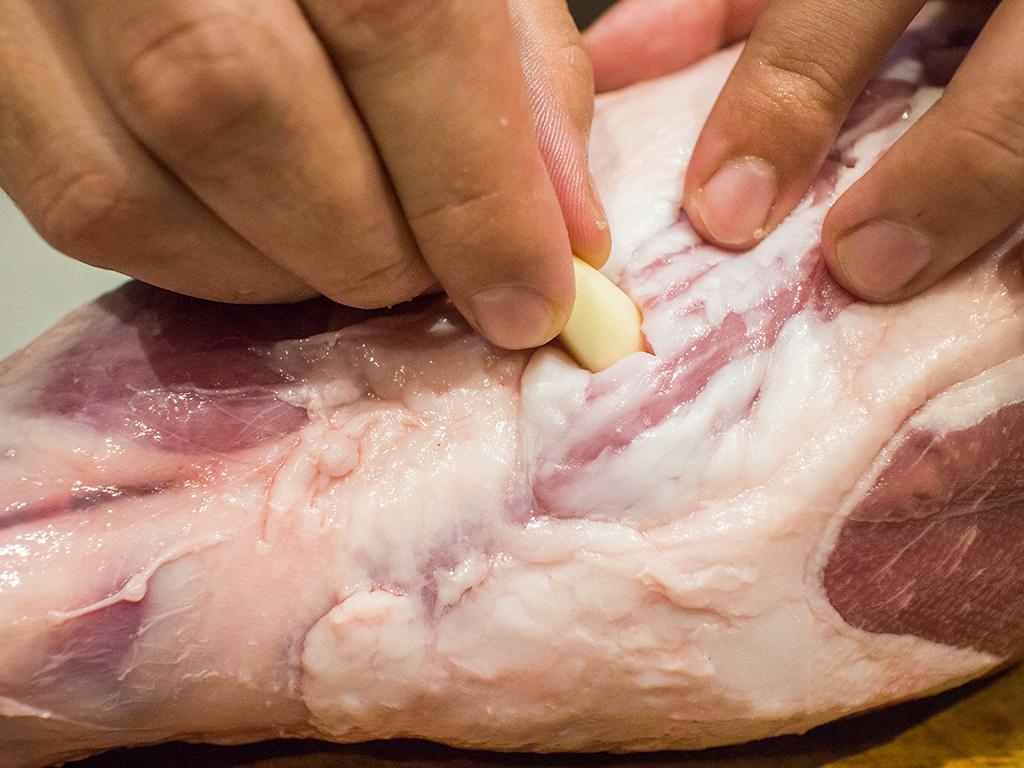
- Take half a sprig or rosemary and shove it into the same cuts, until it is almost all the way in and only the tip shows.
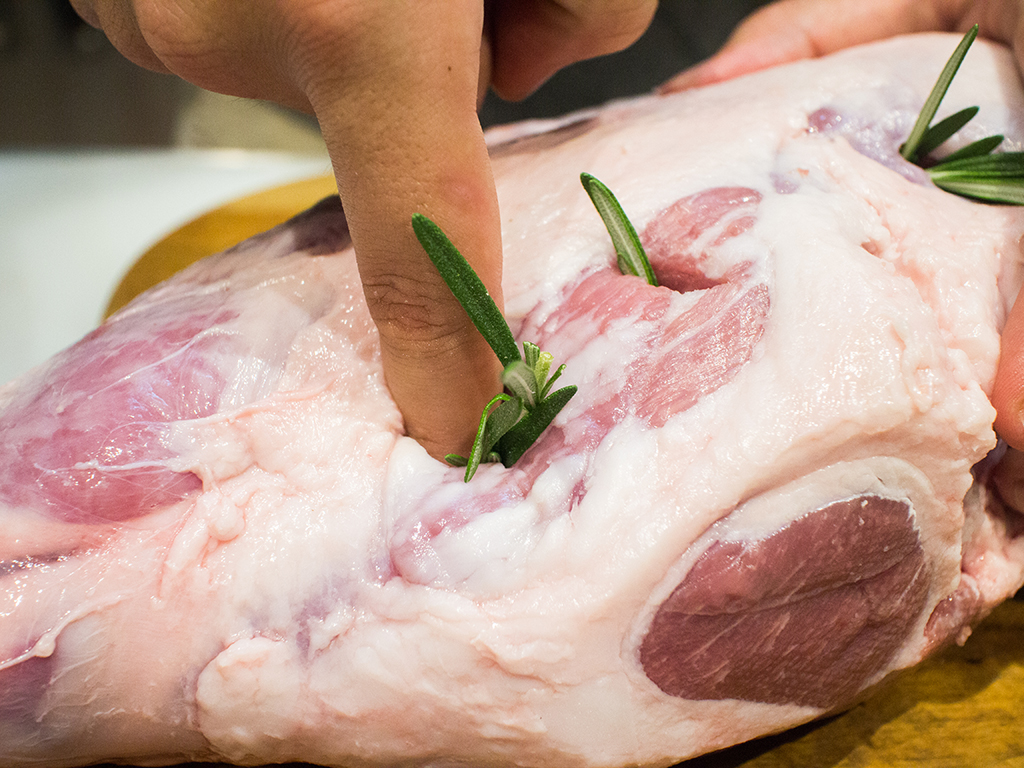
- Your leg of lamb is ready for the marinade!
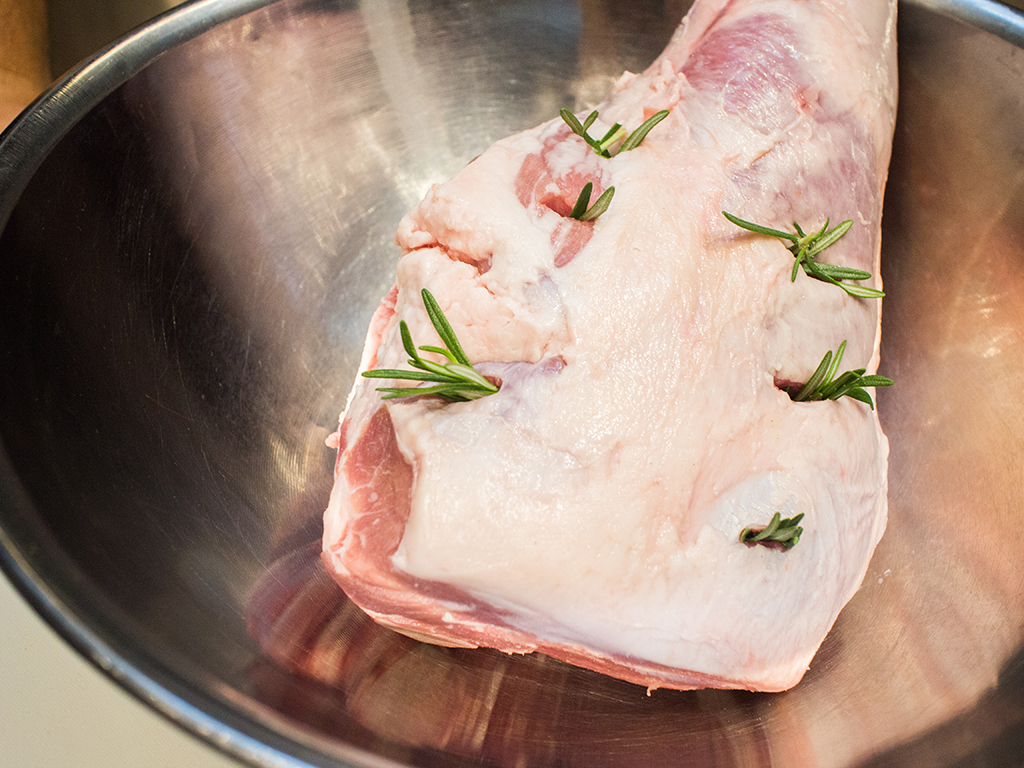
Roast lamb marinade
- Finely mince garlic.
- Remove rosemary leaves from the stem. A quick way to do this is by gripping the tip of the stem with one hand and then sliding your fingers down the stem right to the bottom.
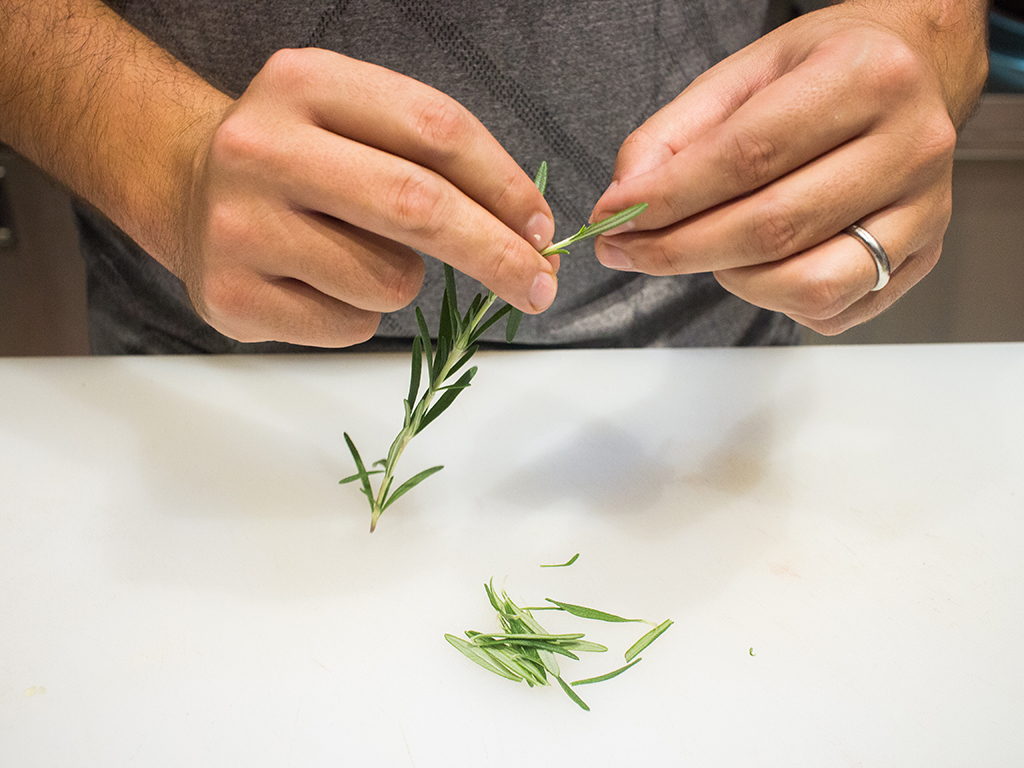

- Finely chop rosemary leaves.
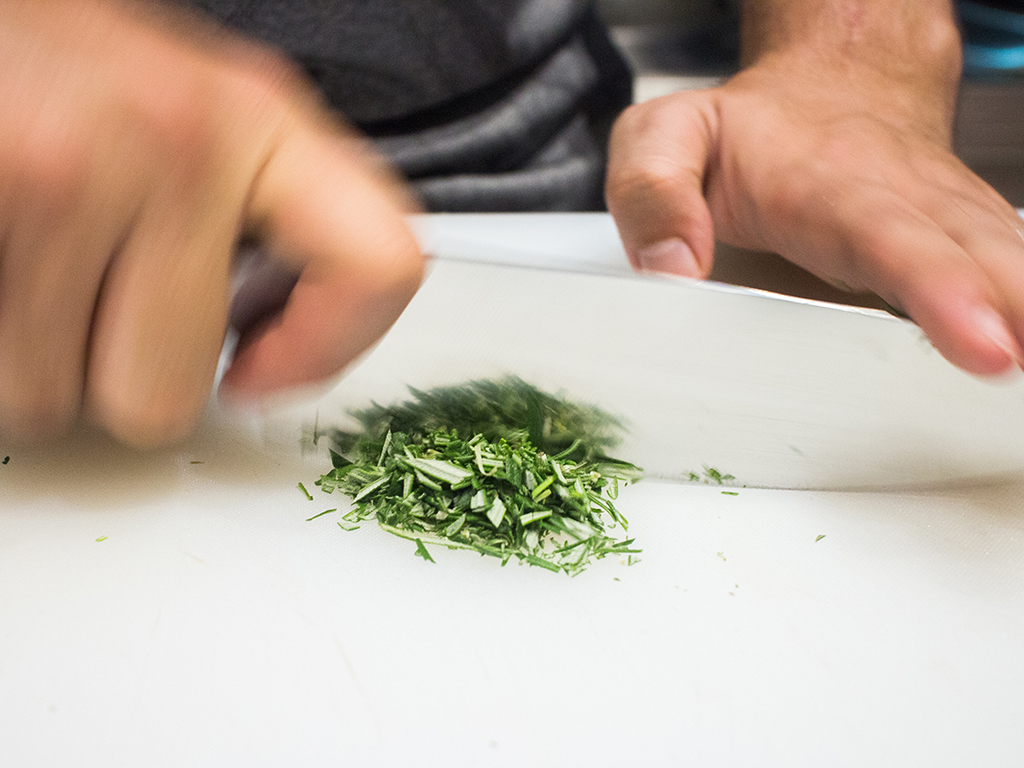
- In a bowl, add minced garlic, chopped rosemary, Cajun, paprika, mustard, salt, pepper and grapeseed oil. Stir to mix thoroughly.
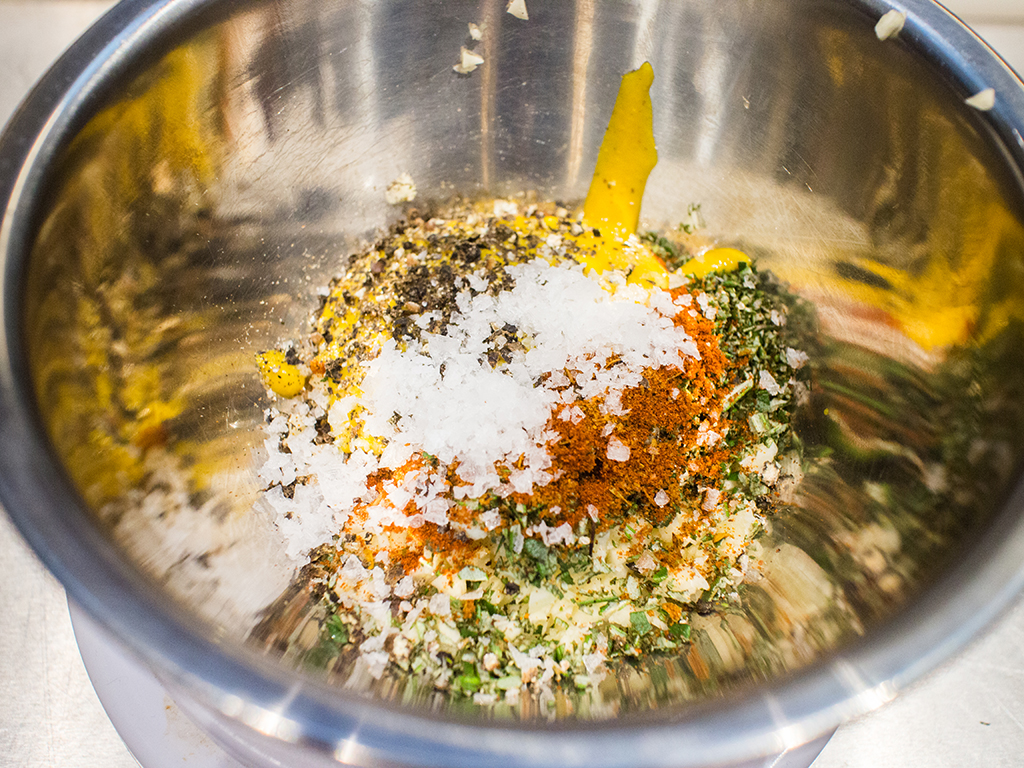
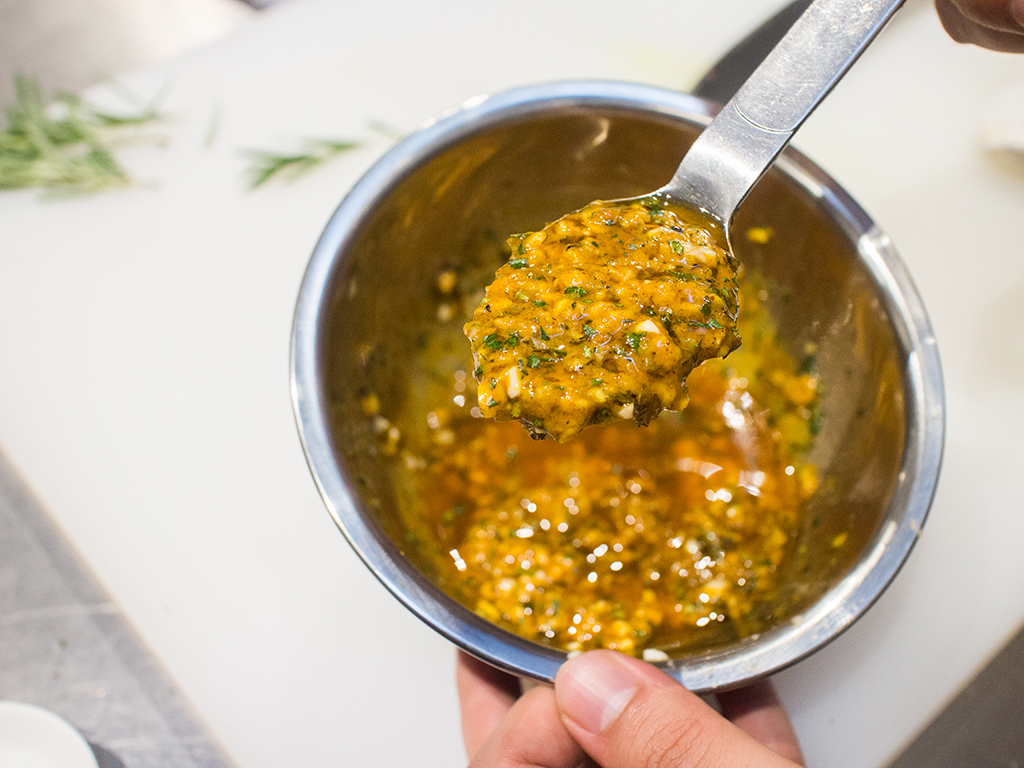
- Spread marinade paste all over the leg of lamb, rubbing it on the exposed portion of the meat.
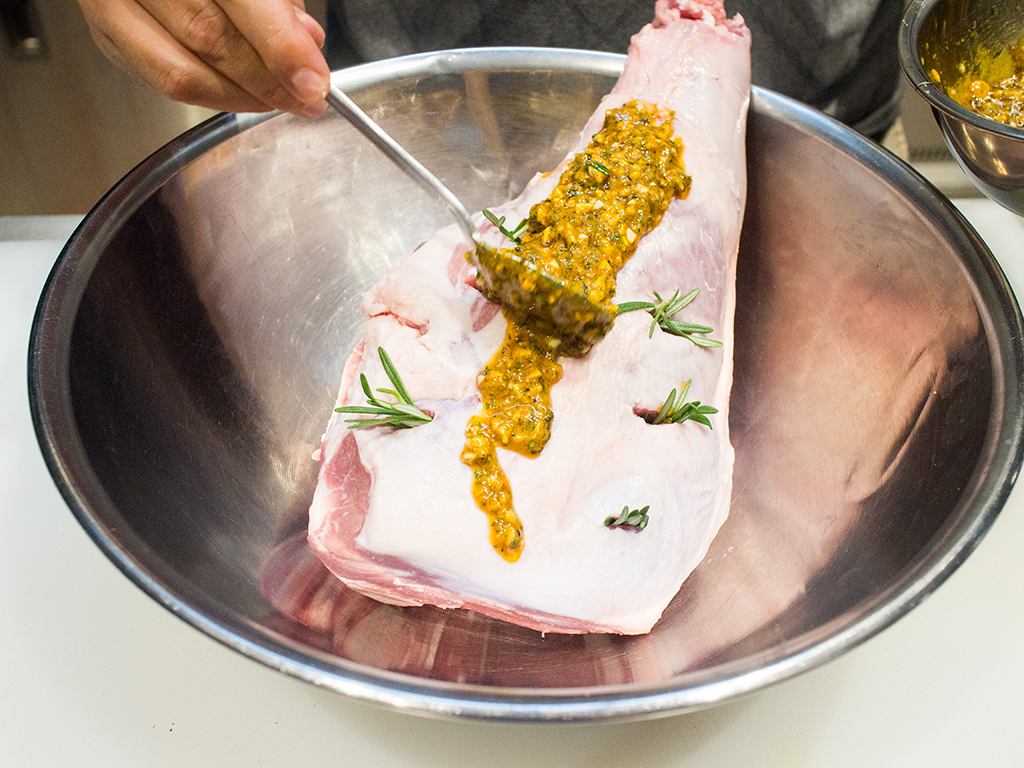
- Sprinkle an additional 1 tsp of salt all over the marinated roast lamb, patting it into the surface of the meat. You can add more or less salt if you like.
Roasting time
- Place lamb on roasting rack over a baking pan. You don’t want the meat to come in direct contact with the pan. If you don’t have a roasting rack, ball up some tin foil into fist size, and place it under the bone to lift your lamb from the pan’s surface. This helps air circulate underneath your lamb and cook it evenly.

- If you have a leave-in thermometer, poke it into the lamb meat now. If you don’t have one, use your cooking thermometer later.
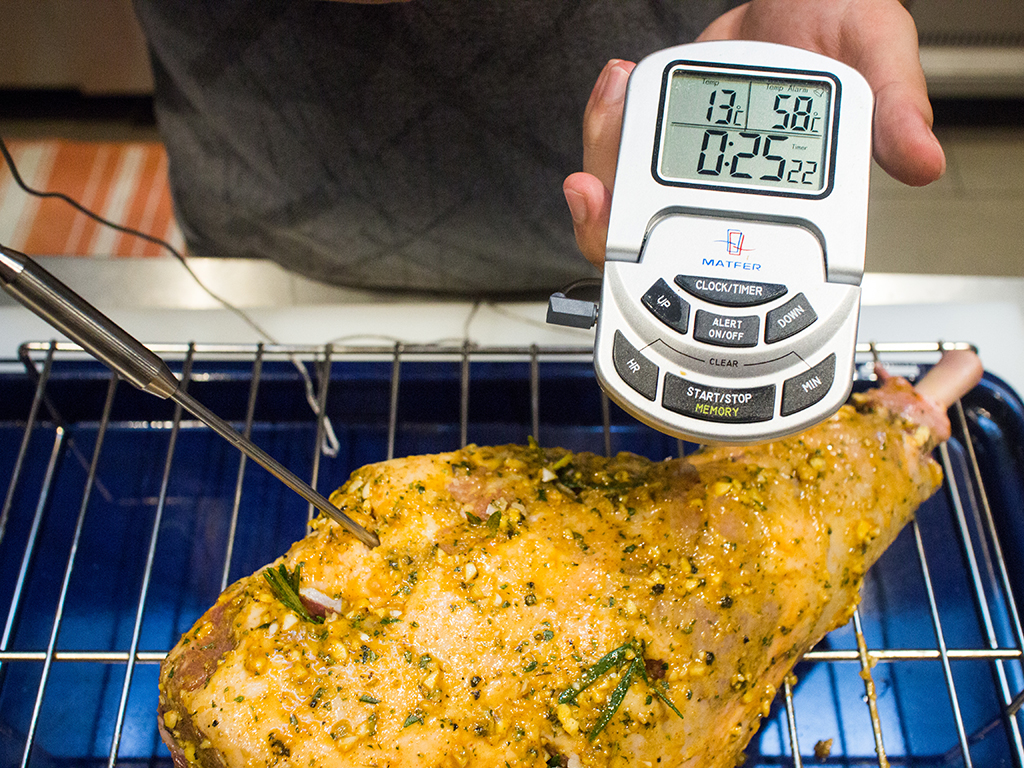
- Place lamb in oven and let it cook until the internal temperature reaches 58°C. This will take about 90 minutes. If your lamb leg is smaller, check the temperature after an hour and monitor closely after that. Adjust timing if your lamb leg is bigger. This is where you poke in your cooking thermometer if you don’t have a leave-in thermometer.

- Once lamb reaches 58°C, remove from oven.
- Crank your oven temperature to as high as it can go, and let it reach that temperature.
- While waiting, remove and reserve lamb juices in a bowl.

- When your oven reaches its max temperature, put the lamb back in and watch it like a hawk. You want the lamb to be in just long enough to crisp the outside. It took us only two minutes in ours (our oven max temperature was 287°C).
- Remove immediately.
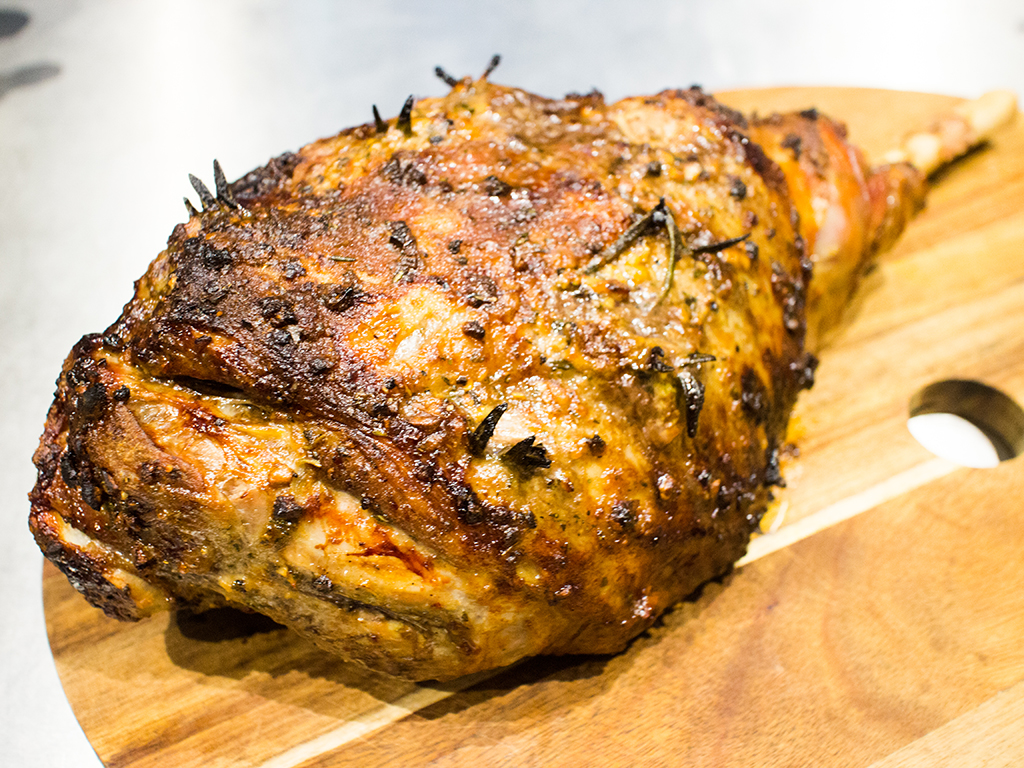
- Before serving or cutting, rest your lamb for a third of the time it was in the oven. So, if your lamb was cooked for 90 minutes, rest it covered with aluminium foil for 30 minutes before serving.

Important tip
If you’re preparing your lamb a little bit ahead of time, especially if you want to use the oven for something else, proceed with step 21 and 22 about 10 to 15 minutes before you’re ready to serve. You’ll be resting your lamb in the meantime, so there’s no need to rest it again after the delayed crisping process. However, don’t let your lamb get cold, unless that is the intention.
Carving roast lamb
If you’ve got a lot of people to feed, special guests to serve or kids at the table, carving your roast lamb beforehand makes it easier to serve and eat.
- Grip the bone with one hand and use a sharp carving knife to slice the meat off completely, as close to the bone as possible. If you’re a pro, you can hold the bone vertically to make the cutting easier. But if you’re not, lay the leg of lamb down on a cutting board and slice horizontally instead. Or hold it diagonally, whichever feels easiest and safest for you.
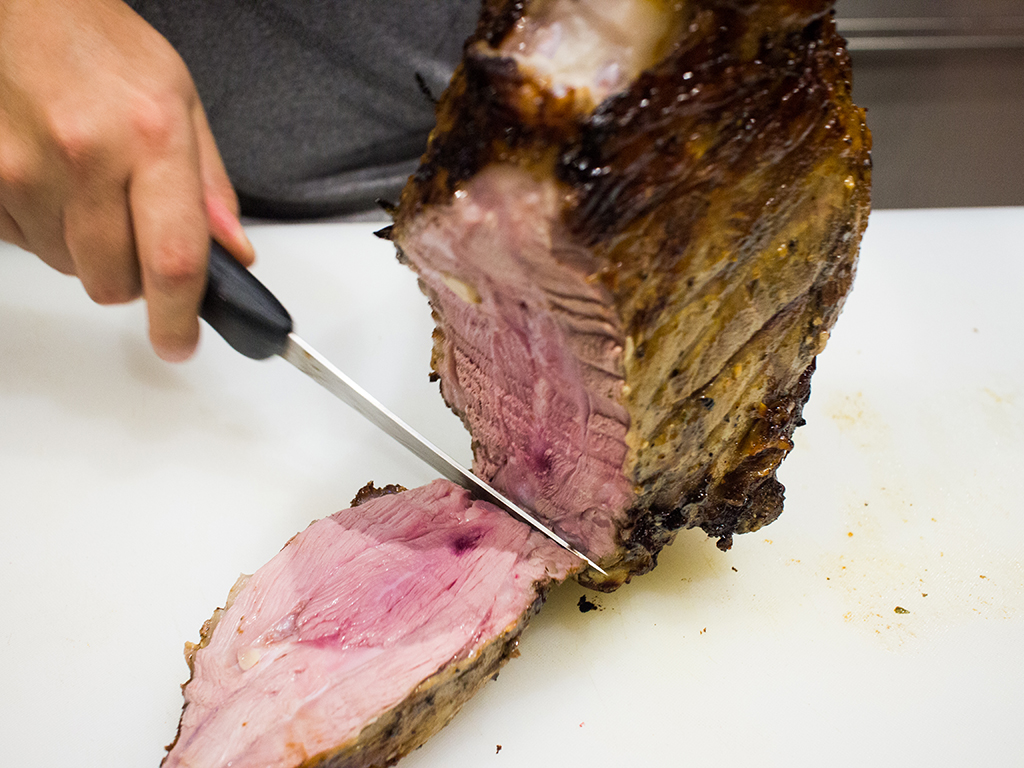
- Slice the meat off on all sides to get a few chunks of meat.

- Slice the meat about 0.5cm to 1cm thick, depending on your preference.
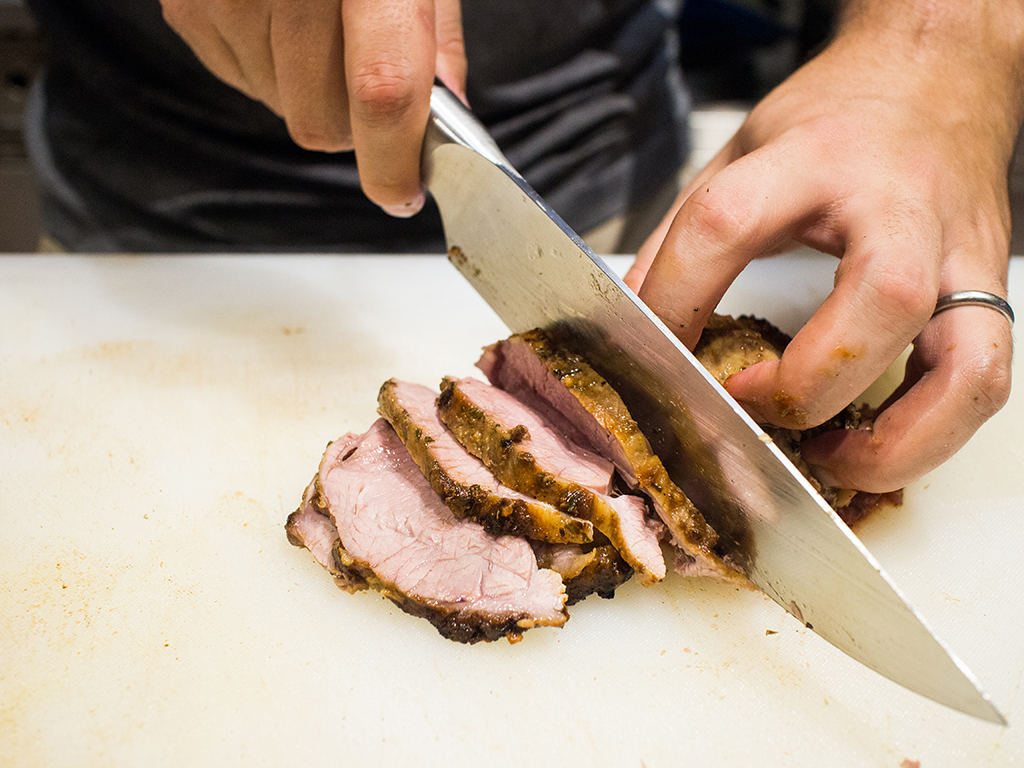
Extra tips
- Replace grapeseed oil with olive oil, canola oil or any mild flavoured oil that can withstand cooking at high temperatures.
- There are two ways of cooking roast lamb – using a low temperature heat of 120°C to 130°C over a longer period, or a higher heat for a shorter time. Regardless of which method you choose, always use a cooking thermometer to get your meat just right.
- Do not use dry herbs!
- You want to move quickly when working with lamb, as the longer you leave it out, the gamier it tastes.
- Cajun helps with the crust and gives the lamb a nice flavour, while paprika adds colour and smokiness to your recipe.
- No hot English mustard? You can also use Dijon. If using powdered mustard, add a little a water so it becomes a paste first.
- Ideally, you’ll want your lamb to have an internal temperature of 60°C for medium well. This is the recommended serving temperature for roast lamb.
Don’t stop there! Roast lamb goes perfect with these trimmings and side dishes:
Show us your roast lamb spread and by hashtagging us with #butterkicap! Roast leg of lamb is also a great communal meal, so get your guests to bring the trimmings. And don’t forget to serve it with some mint sauce or mint jelly on the side too.
